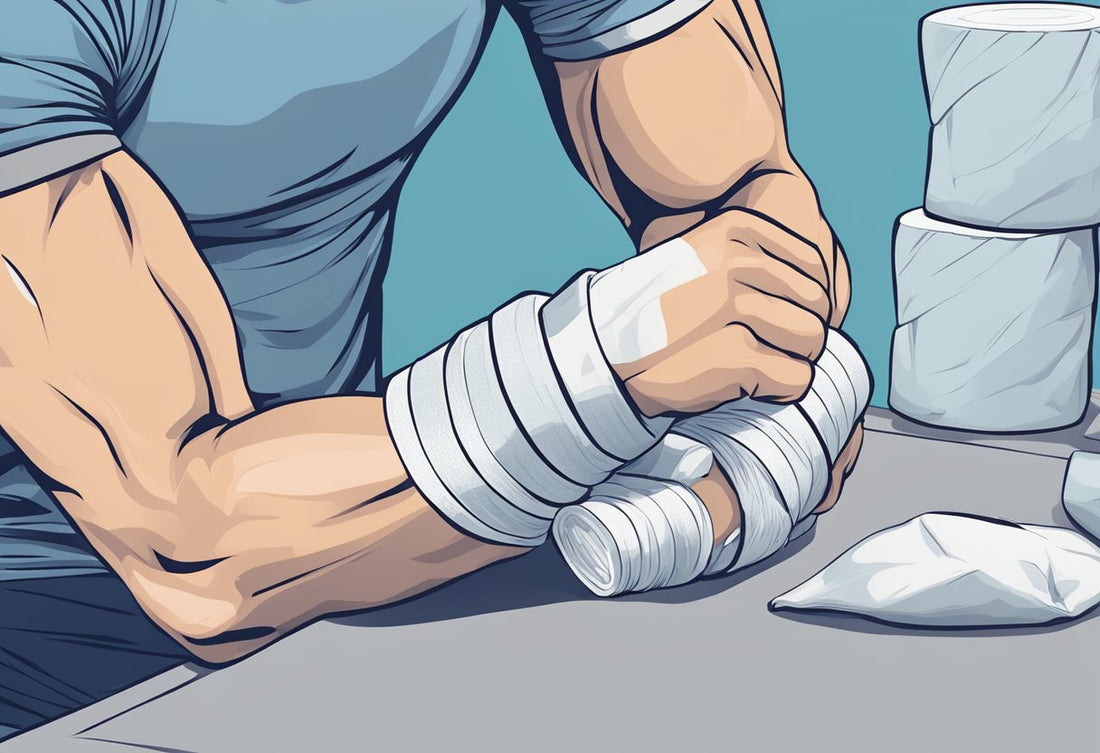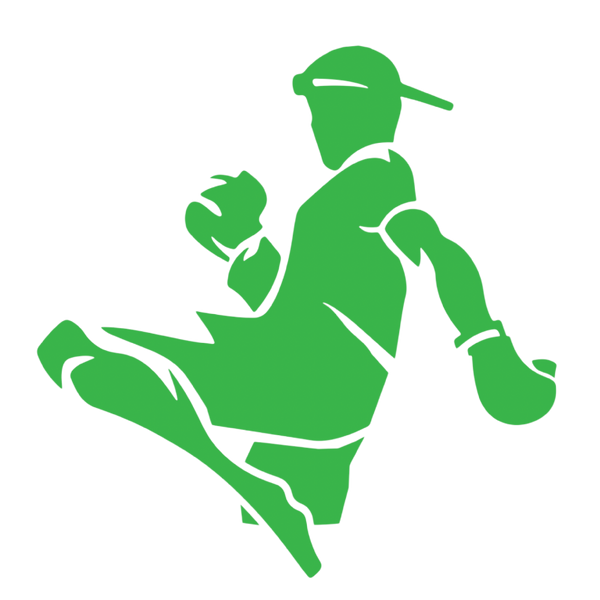
How to Treat Tendinitis from MMA
Share
If you're an MMA fighter, you know that tendinitis can be a common and painful injury. Tendinitis occurs when the tendons in your body become inflamed, often causing pain and discomfort. In MMA, tendinitis can occur in various joints, including the elbows, shoulders, and knees, due to the repetitive motions and strain put on these areas during training and fighting.

Fortunately, there are several effective treatments for tendinitis that can help you get back to training and fighting at your best. Treatment options include rest, ice, compression, and elevation, as well as anti-inflammatory medications and physical therapy. It's important to seek treatment as soon as possible if you suspect you have tendinitis, as leaving the condition untreated can lead to more serious injuries and longer recovery times.
In this article, we'll explore the various causes of tendinitis in MMA, as well as the most effective treatments for this common injury. Whether you're a seasoned fighter or just starting out, understanding how to prevent and treat tendinitis can help you stay healthy and perform at your best in the ring.
Understanding Tendonitis in MMA

If you're an MMA fighter, you're likely to experience tendinitis at some point in your career. Tendinitis is a common injury that occurs when the tendons become inflamed, irritated, or swollen. It can be caused by repetitive motions, overuse, or sudden injuries.
Causes of Tendonitis
Tendinitis can be caused by a variety of factors, including poor technique, overtraining, lack of proper warm-up, and insufficient rest between training sessions. It can also be caused by sudden movements or injuries, such as those that occur during sparring or competition.
Common Symptoms
The most common symptom of tendinitis is pain. This pain can vary in intensity and may be felt as a dull ache or a sharp, stabbing pain. Other symptoms include stiffness, swelling, and tenderness around the affected area. You may also experience weakness or a loss of mobility in the affected joint or muscle.
Diagnosis Process
If you suspect you have tendinitis, it's important to see a doctor or sports medicine specialist for a proper diagnosis. They will likely perform a physical exam and ask you about your symptoms and medical history. They may also order imaging tests, such as an X-ray or MRI, to rule out other potential injuries.
Once diagnosed, treatment for tendinitis typically involves rest, ice, compression, and elevation (RICE). You may also be prescribed anti-inflammatory medication or physical therapy to help manage your symptoms and speed up the healing process.
In conclusion, tendinitis is a common injury among MMA fighters that can be caused by a variety of factors. If you experience symptoms of tendinitis, seek medical attention for a proper diagnosis and treatment plan. With proper care and rest, you can recover from tendinitis and get back to training and competing at your best.
Immediate Actions to Reduce Pain

When it comes to treating tendinitis in MMA, it's important to take immediate action to reduce pain and prevent further damage. Here are some effective methods to help you do just that.
Rest and Ice Application
The first step in treating tendinitis is to rest the affected area. This means avoiding any activities that cause pain or discomfort. You can also apply ice to the area to reduce inflammation and alleviate pain. Simply wrap an ice pack in a towel and apply it to the affected area for 15-20 minutes at a time, several times a day.
Compression Techniques
Compression can also help to reduce swelling and pain associated with tendinitis. You can use a bandage or compression sleeve to apply pressure to the affected area. This will help to reduce inflammation and promote healing.
Elevation Methods
Elevating the affected area can also help to reduce swelling and pain. Simply prop up the affected limb on a cushion or pillow, so that it's above heart level. This will help to improve circulation and reduce inflammation.
By taking these immediate actions to reduce pain, you can effectively treat tendinitis and prevent further damage. Remember to rest the affected area, apply ice, use compression techniques, and elevate the limb to reduce swelling and pain. With time and proper care, you can make a full recovery and get back to your MMA training.
Medical Treatments and Medications

When it comes to treating tendinitis in MMA, there are several medical treatments and medications that can help alleviate pain and promote healing. Here are some of the most common options:
Painkillers and Anti-Inflammatory Drugs
One of the most common ways to manage tendinitis pain is by taking painkillers and anti-inflammatory drugs. Ibuprofen is a popular choice, as it can help reduce inflammation and relieve pain. However, it's important to note that these medications only provide temporary relief and should not be relied on as a long-term solution.
Physiotherapy Sessions
Physiotherapy can also be an effective way to treat tendinitis. A physiotherapist can develop a customised exercise plan to help strengthen the affected area and improve range of motion. They may also use techniques such as massage and stretching to help alleviate pain and promote healing.
Advanced Treatment Options
In some cases, more advanced treatment options may be necessary. For example, if the tendinitis is severe or has not responded to other treatments, surgery may be required. Steroid injections may also be used to reduce inflammation and pain, although these should be used sparingly due to potential side effects. Another option is platelet-rich plasma therapy, which involves injecting a concentrated solution of the patient's own blood platelets into the affected area to promote healing.
Remember, it's important to consult with a doctor or physiotherapist before beginning any treatment for tendinitis. They can help determine the best course of action based on your individual needs and circumstances.
Rehabilitation and Strengthening Exercises

If you're an MMA fighter dealing with tendinitis, it's important to take a multi-faceted approach to your recovery. Along with rest and stretching, rehabilitation and strengthening exercises can help you get back in the ring faster and stronger than ever before.
Developing a Recovery Routine
To start, it's important to develop a recovery routine that works for you. This routine should include a mix of rest, stretching, and strengthening exercises to help you recover from your tendinitis and prevent future injuries.
When developing your routine, be sure to listen to your body and adjust as needed. It's also a good idea to work with a physical therapist or trainer to ensure you're doing the right exercises and doing them correctly.
Eccentric Strengthening Workouts
One type of strengthening exercise that has been shown to be effective for tendinitis is eccentric strengthening. This type of exercise involves lengthening the muscle under tension, which can help improve strength and reduce pain.
Some examples of eccentric strengthening exercises for tendinitis include:
- Eccentric calf raises: Stand on a step with your heels hanging off the edge. Rise up on your toes, then slowly lower your heels below the step. Repeat for several reps.
- Eccentric wrist curls: Hold a light weight in your hand with your palm facing up. Curl your wrist up, then slowly lower the weight back down. Repeat for several reps.
- Eccentric hamstring curls: Lie face down on a bench with your feet hooked under a bar. Slowly lower your body down until your legs are straight, then use your hamstrings to lift your body back up. Repeat for several reps.
Remember to start with a light weight and gradually increase as you get stronger. Also, be sure to stretch before and after your workouts to prevent further injury.
By incorporating rehabilitation and strengthening exercises into your recovery routine, you can get back to fighting form in no time.
Preventing Tendonitis Recurrence in MMA
Tendinitis is a common injury in MMA and can be frustrating for fighters, as it can take weeks or even months to fully recover from. However, there are several steps you can take to prevent tendinitis from recurring and keep yourself in top condition.
Importance of Proper Warm-Up and Cool Down
One of the most important steps in preventing tendinitis recurrence is to ensure that you warm up and cool down properly before and after training. A good warm-up routine should include dynamic stretching, light cardio, and mobility exercises to prepare your muscles and joints for the demands of training. Similarly, a cool-down routine should include static stretching and foam rolling to help your muscles recover and prevent stiffness.
Adopting Correct Techniques and Posture
Another key factor in preventing tendinitis is to adopt correct techniques and posture when training. Poor technique and posture can put unnecessary strain on your tendons and lead to overuse injuries. Make sure to work with a coach or trainer to ensure that your technique is correct and that you are using proper form throughout your training sessions.
Regular Breaks and Equipment Choices
Taking regular breaks and choosing the right equipment can also help to prevent tendinitis recurrence. Overuse and repetitive movements can put a lot of strain on your tendons, so it's important to take regular breaks and give your body time to rest and recover. Additionally, choosing the right equipment, such as shoes with good cushioning and support, can help to reduce the impact on your joints and tendons.
In conclusion, preventing tendinitis recurrence in MMA requires a combination of proper warm-up and cool down routines, correct techniques and posture, regular breaks, and good equipment choices. By taking these steps, you can reduce the risk of tendinitis and stay in top condition for your next fight.
